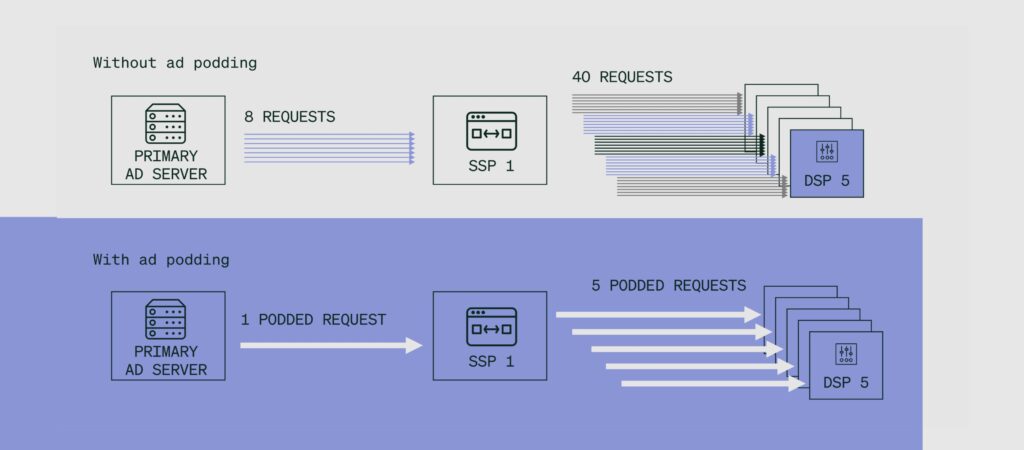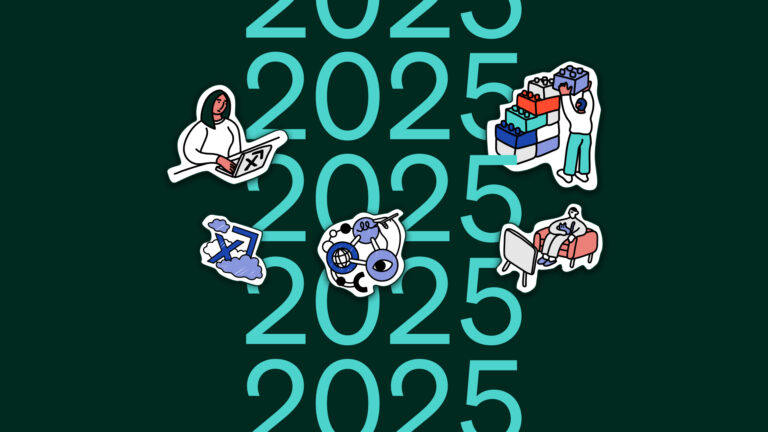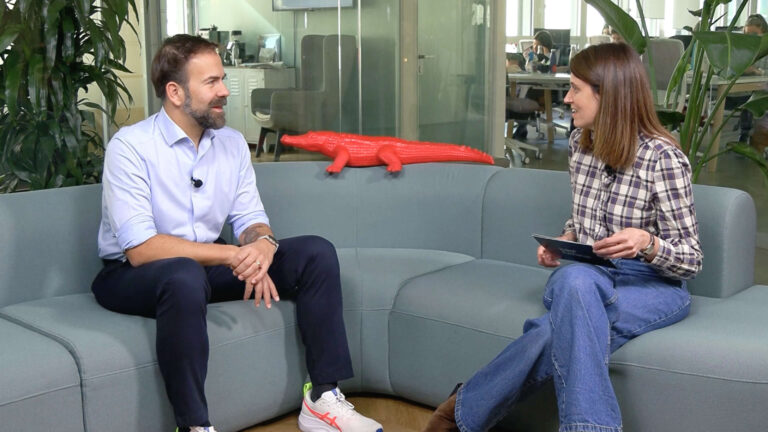Streaming TV ads are usually delivered in pods—a group of sequential ads shown during a commercial break. For viewers, this mirrors the familiar traditional TV experience of an ad break. But in programmatic environments, replicating that structure has long been a technical challenge, resulting in fragmentation and inefficiency.
Legacy infrastructure, built before OpenRTB 2.6, treated each impression in a pod as an isolated opportunity. This misalignment between how ads are viewed when watching streaming TV and how they’re transacted programmatically created inefficiencies for buyers, strain on DSP systems, and missed monetization opportunities for streaming publishers.
To solve this, we implemented end-to-end ad podding—built on the OpenRTB 2.6 standard—to carry the full podded structure from the streaming publisher to DSP, unlocking smarter and more efficient transactions.
The challenge: bidding blind in a podded world
Most DSPs still receive streaming TV supply as separate impression requests even when they originate from one ad pod. Consider a 90-second ad break, for example.
Instead of receiving a request that says, “here’s one 90-second ad break with three slot opportunities,” the DSP sees, “here are three separate ad opportunities,” without mentioning they’re all part of the same break.
That means DSPs can’t see the full picture, leading to critical inefficiencies:
- Infrastructure strain: Individual requests flood the supply chain with multiple bid opportunities, inflating queries per second (QPS) and placing unnecessary strain on DSP infrastructure.
- Creative duplication: Without visibility into the full pod, DSPs may unintentionally submit the same creative for multiple slots, increasing publisher-side rejections.
- Limited context: Without pod-level data like duration or slot position, DSPs can’t make informed decisions, reducing efficiency and media value.
The fix: end-to-end ad podding built for DSPs
To address these systemic inefficiencies, we’ve implemented DSP-side ad podding, a standards-based approach that preserves pod structure across the entire supply chain.
Through our contributions to the OpenRTB 2.6 specification, we’ve helped define how podded supply should be packaged, delivered, and bid on—ensuring the full context of the ad pod is maintained from the streaming publisher through to the DSP.
Rather than sending multiple isolated impressions, we can now send one request that includes everything DSPs need to know: how long each pod is, what position it occupies, how to avoid duplicate creatives, and more.

With our podding solution, DSPs can:
- Reduce QPS: Consolidate multiple impression opportunities into one request, significantly reducing infrastructure load and improving throughput.
- Enhance bid quality: Use pod-level metadata such as pod duration, context, and competitive separation to bid more strategically.
- Avoid creative duplication: Improve ad quality and delivery efficiency with built-in logic for deduplication and frequency controls across ad breaks.
This aligns how DSPs transact with how viewers actually watch streaming TV—and how streaming publishers are already packaging their supply.
How does ad podding deliver real results for DSPs?
Ad podding isn’t just a cleaner transaction framework. Across our exchange, we’ve seen how it delivers measurable improvements across performance, efficiency, and scalability.
1. Smarter, transparent bidding: With access to pod-level data, including length, context, and overall structure, DSPs can bid with greater precision and confidence.
- 39% Average reduction in creative duplication
- Up to 25% increase in win rate
2. Lower QPS, higher performance: Multi-impression, or podded, bid requests significantly reduce the number of queries sent, freeing up capacity for more bidding opportunities.
- 70% Average reduction in QPS
- Up to 5x increase in revenue per thousand impressions (RPM)
3. Improved sustainability: Eliminating unnecessary traffic translates to lower QPS, better efficiency, and a reduced carbon footprint.
- 84% Reduction in emissions during the ad selection process
StackAdapt was one of the first DSPs to implement Index’s ad podding solution and has already seen impressive results.
“By moving away from flattened request structures and embracing pod-level transparency, we’ve not only reduced infrastructure strain and improved bid quality, but also set the stage for more scalable, intelligent buying.”
Greg Joseph, VP of Inventory Development
StackAdapt
Make every second count
With podded supply already the norm among streaming publishers, it’s time to extend those benefits downstream. End-to-end ad podding empowers DSPs to transact with context, not guesswork.
Whether your goals are driven by performance, cost savings, sustainability gains, or all three, ad podding helps you do more with less.
Let’s build a smarter, more efficient streaming TV ecosystem together.
Learn how you can implement Index Exchange’s end-to-end ad podding solution.
Back to blog






